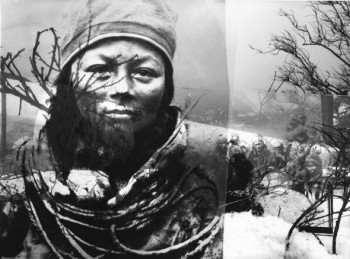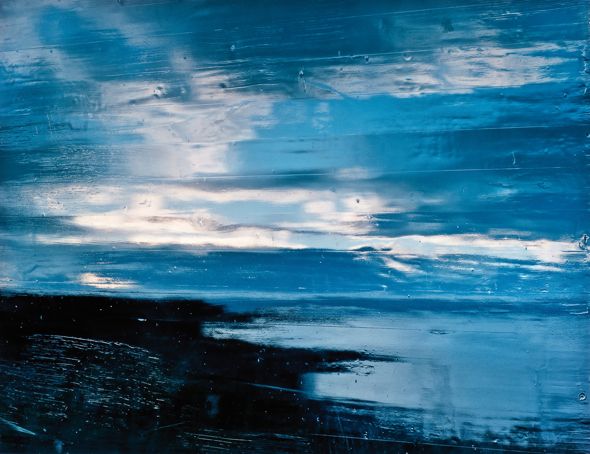Search results for "2010/05/2009/10/writing-and-power"
Panem et circenses?
2 February 2012 | This 'n' that
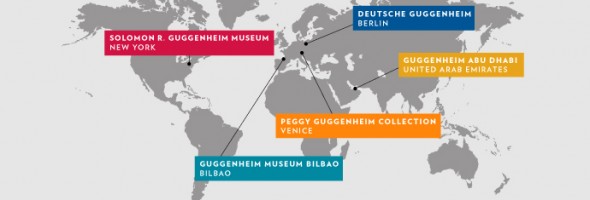
The Guggenheim Foundation's global network of museums
What does Helsinki need? Bread and circuses, yes, but at what cost the latter?
In January – after a study that cost the Finns a couple of million euros – the Salomon R. Guggenheim Foundation (est. 1937) indicated that it was favourably inclined toward the construction of a new art museum, bearing its name, in Helsinki. The leaders of Helsinki city council are aiming to make a positive decision as soon as possible.
The cost of the building, whose site adjoins the Presidential Palace in central Helsinki, is estimated at 130–140 million euros, with design costs of about 11 million euros. Unlike in the case of Berlin, no existing building is considered suitable; instead, an architectural dream must be realised, with plenty of wow-factor.
Its mere maintenance costs will be around 14.5 million euros a year. It has been estimated that the Helsinki Guggenheim’s income could be 7.7 million a year. In addition, a 20-year Guggenheim licence costs 24.6 million euros.
The project has provoked widely differing reactions. Proponents of the project believe that the Guggenheim brand would bring thousands of new visitors to Helsinki and that half a million people would visit it each year. Opponents doubt this, speak of a ‘Guggenburger’ franchising concept and of the fact that not even the existing art museums of Helsinki are particularly crowded.
The odd thing is, however, that the basic demographic differences between Helsinki and, say, Bilbao – where the Guggenheim museum has been a big success – are constantly ignored in the discussions: the population of Spain is almost 50 million and another 50 million visitors go there every year, while the corresponding figures for this most northerly part of Europe are five million inhabitants and visitors.
In Bilbao, moreover, there was no museum of contemporary art before the advent of the Guggenheim; Helsinki, on the other hand, opened Kiasma, a new museum of contemporary art (165,000 visitors in 2010) in 1998 and the neighbouring city of Espoo its Emma museum of modern art (82,000 visitors in 2010) in 2006.
Economic prospects on any level now offer little hope. The Finnish government, in the shape of the ministry of culture, has just cut grants to state-aided museums by three million euros – the Museum of Cultures in Helsinki, for example, is closing its doors, and some 40 of the museum staff elsewhere will be sacked. The government is not promising any money to the Guggenheim.
How, then, to fund an annual deficit of 7 million euros? Finland does not have a great supply of art-minded millionaire sponsors, and no one has so far made any concrete offers on how to fund this project.
The Guggenheim Foundation itself is not taking any financial risks with this project. Neither has it announced in any detail what sort of art will feature in the museum’s temporary exhibitions.
People who live in the city are more preoccupied with, for example, the shortcomings of the health services: there are waiting lists for everything, often of many weeks, and the old university children’s hospital has outgrown its present space. There are cuts and shrinkages yet to come in the spending structure of the country as a whole and of Helsinki – civil servants themselves estimate that the city’s budget is not sufficient to cover even the upkeep of basic services.
To judge by the public debate, the deep ranks of Helsinki taxpayers do not want a new monument, one for which it will be necessary to pay – in addition to maintenance – more than a million euros a year to an American brand for the mere use of its name, for more than 20 years.
Do the people of Helsinki wish to begin to pay additional taxes for the revival, yet again, of the age-old dream of guaranteeing Finland ‘a place on the world map’, in a situation where economic difficulties are a matter of everyday life for increasing numbers of them? (We believe, incidentally, that Finland already has an appropriate place on the world map.) Will their opinion be asked, or heard?
Seekers and givers of meaning: what the writer said
2 October 2014 | This 'n' that
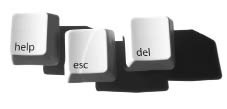 ‘All our tales, stories, and creative endeavours are stories about ourselves. We repeat the same tale throughout our lives, from the cradle to the grave.’ CA
‘All our tales, stories, and creative endeavours are stories about ourselves. We repeat the same tale throughout our lives, from the cradle to the grave.’ CA
‘Throughout a work’s journey, the writer filters meanings from the fog of symbols and connects things to one another in new ways. Thus, the writer is both a seeker of meaning and a giver of meaning.’ OJ
‘Words are behind locks and the key is lost. No one can seek out another uncritically except in poetry and love. When this happens the doors have opened by themselves.’ EK
‘I realised that I had to have the courage to write my kind of books, not books excessively quoting postmodern French philosophers, even if that meant laying myself open to accusations of nostalgia and sentimentality.’ KW
‘If we look at the writing process as consisting of three C:s – Craft, Creativity and Chaos – each one of them is in its way indispensable, but I would definitely go for chaos, for in chaos lies vision.’ MF
‘In the historical novel the line between the real and the imagined wavers like torchlight on a wall. The merging of fantasy and reality is one of the essential features of the historical novel.’ KU
‘The writer’s block isn’t emptiness. It’s more like a din inside your head, the screams of shame and fear and self-hatred echoing against one another. What right have I to have written anything in the first place? I have nothing to say!’ PT
‘…sometimes stanzas have to / assume the torch-bearer’s role – one / often avoided like the plague. / Resilient and infrangible, the lines have to / get on with their work, like a termite queen / laying an egg every three seconds / for twenty years, / leaving a human to notice / their integrity. ’ JI
In 2007 when Books from Finland was a printed journal, we began a series entitled On writing and not writing; in it, Finnish authors ponder the complexities, pros and cons of their profession. Now our digitised archives make these writings available to our online readers: how do Claes Andersson, Olli Jalonen, Eeva Kilpi, Kjell Westö, Monika Fagerholm, Kaari Utrio, Petri Tamminen and Jouni Inkala describe the process? Pain must coexist with pleasure…
From 2009 – when Books from Finland became an online journal – more writers have made their contributions: Alexandra Salmela, Susanne Ringell, Jyrki Kiiskinen, Johanna Sinisalo, Markku Pääskynen, Ilpo Tiihonen, Kristina Carlson, Tuomas Kyrö, Sirpa Kähkönen – the next, shortly, will be Jari Järvelä.
Re-inventing the book: on the papernet, pod and the unbook
20 May 2009 | Articles, Non-fiction

Mind-map: using the papernet to produce books just for you. - Photo: Brian Suda
Just as Books from Finland finally goes online, the brightest minds of the internet are forecasting a return to paper. In the first of a series of articles, the poet and scholar Teemu Manninen celebrates the second coming of the book
Last week I did something I’ve never done before. I uploaded the manuscript of my third book on to the website Books on Demand, an internet print-on-demand (‘pod’) service, chose the format (a large 19×22 cm size with a hard cover), selected a picture for my cover, copy-pasted a poem by Clark Ashton Smith – an American science fiction and fantasy writer – on the back flap and ordered a copy. More…
Liisa Kallio: Pikku Papu [Little Papu]
31 January 2011 | Mini reviews, Reviews
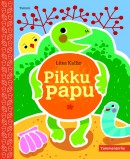 Pikku Papu
Pikku Papu
[Little Papu]
Kuvitus [Ill. by]: Liisa Kallio
Helsinki: Tammi, 2010. 31 p.
ISBN 978-951-31-5242-0
€10.30, hardback
In 2009, Finnish publisher Tammi launched its Tammenterho (‘Acorn’) series of picture books written by established Finnish authors to run along its Tammen Kultaiset kirjat (Tammi Golden Books series, modelled after a US imprint dating back to the 1940s). Pikku Papu is a jolly wandering tale for the smallest children. Papu the Tortoise notices that his shell, which he left on the beach while he went for a swim, has shrunk. In his search for a solution to his problem, he encounters a number of animals. Papu tries to cover himself with a glove he finds on the beach, but it proves to be too warm, and an eggshell he is given by a bird cracks. Fortunately, of course, everything works out in the end. This gentle story lets children identify colours and shapes and recognise various animals. The collage illustrations are attractive, and the text is simple, calmly told and appropriately short.
Translated by Ruth Urbom
Reetta Niemelä & Salla Savolainen: Sinisen kärpäsen sirkus ja muita runoja [The blue fly circus and other poems]
3 February 2011 | Mini reviews, Reviews
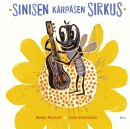 Sinisen kärpäsen sirkus ja muita runoja naapurinötököistä
Sinisen kärpäsen sirkus ja muita runoja naapurinötököistä
[The blue fly circus and other poems about neighbourhood creepy-crawlies]
Kuvitus [Ill. by]: Salla Savolainen
Helsinki: Otava, 2010. 40 p.
ISBN 978-951-1-24002-0
€20, hardback
Reetta Niemelä has provided a breath of fresh air in Finnish children’s poetry with her collections Makkarapiruetti (‘Sausage pirouette’, 2005) and Kakaduu (‘Cockatooo’, 2009), whose onomatopoeic sounds and whimsical grammar are reminiscent of children’s language play as they learn to speak. This book opens up the secrets of the world of earthworms and the tiniest of insects to the reader, revealing natural wonders at (literally) grass-roots level. The most delightful aspect, however, is to be found in its illustrations: Salla Savolainen employs a painstaking, richly nuanced woodcut technique, which puts a natural finishing touch to the collection. This sort of delicacy has not been seen in children’s book illustration in a very long time! Savolainen’s images seem light, breezy and lively – each little bug has its own charismatic personality.
Translated by Ruth Urbom
Timo Parvela & Jussi Kaakinen: Taro maan ytimessä [Taro at the centre of the Earth]
3 February 2011 | Mini reviews, Reviews
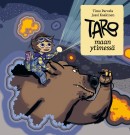 Taro maan ytimessä
Taro maan ytimessä
[Taro at the centre of the Earth]
Kuvitus [Ill. by]: Jussi Kaakinen
Helsinki: WSOY, 2010. 24 p.
ISBN 978-951-0-36718-6
€22, hardback
Illustrator Jussi Kaakinen (born 1978) is known for, among other things, his illustrations for the graphic novel version of Risto Isomäki’s sci-fi work Sarasvatin hiekkaa (‘The sands of Sarasvati’, 2008) and two children’s non-fiction books, Suomen lasten historia (‘A Finnish children’s history’, 2005) and Suomen lasten taidehistoria (‘A Finnish children’s art history’, 2009). Taro maan ytimessä is his first picture book in his own right. Kaakinen employs an experimental illustration style here, borrowing from comic book techniques, to create an appropriately fast-paced text. The children in the story are curious to find out whether they can dig deep enough in their sandbox to reach the other side of the world. Taro has a bear for a friend who constructs a machine out of old junk that can dig into the Earth and then into outer space. On their daredevil journey, the pair encounter a greedy monster worm with a sweet tooth. Their adventure ends when Taro returns home, although the space worm, making a racket in the sewers, ought to be hidden from his parents…. Taro maan ytimessä is a pacey, visually striking adventure that will be especially enthralling to boys.
Translated by Ruth Urbom
Good school, bad pupils, or vice versa?
21 December 2012 | This 'n' that

Number one: Finland. The Pearson analysis, 2012
Finland is used to feeling pretty good about itself when it comes to education. In the widely respected PISA tests – the Organisation for Economic Co-operation and Development’s exams in science and literacy – Finnish schoolchildren have, since the turn of the century, been outperforming most of their peers.
A shock came in 2009 when the tests revealed that Finnish kids were only third-best at reading, and sixth in maths; but by this time they were competing against the newly participating Asian countries, with their huge concentration on education.
Now, however, a new league table, drawn up by the education publishers Pearson, places Finland right at the top (2006–2010, 40 countries). Second place is held by South Korea; third is Hong Kong. The Pearson analysis uses a broader set of criteria, using not just test results but broader measures such as how many people go to university. In a result that is causing some puzzlement in the United Kingdom, Britain is rated sixth. Entirely, say critics, because British universities are so easy to get into.
The results are indeed flattering to Finland – but Finnish children’s motivation to learn is among the weakest in the survey’s countries. In reading, mathematics and the sciences Finns’ attitudes and application were low. It looks as if Finnish children consider school a place to hang out with their friends, not a place for teaching and learning. Countries where competition is stronger breed different attitudes.
So here’s the Finnish paradox: kids here hate school – yet still end up at the top of the list.
Must be something in the water.
Linnoista lähiöihin. Rakennetut kulttuuriympäristöt Suomessa [From castles to suburbs. Built cultural environments in Finland]
26 August 2010 | Mini reviews, Reviews
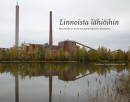 Linnoista lähiöihin. Rakennetut kulttuuriympäristöt Suomessa
Linnoista lähiöihin. Rakennetut kulttuuriympäristöt Suomessa
[From castles to suburbs. Built cultural environments in Finland]
Toim. [Ed. by] Pinja Metsäranta
Helsinki: Finnish Literature Society, 2010. 239 p., ill.
ISBN 978-952-616-206-8
€ 42, hardback
The 2009 inventory of the Finnish National Board of Antiquities includes about 1,300 nationally important built cultural environments, about a tenth of which are represented in this volume. The book introduces the reader to churches, mansions and military barracks, as well as to idyllic countryside and areas formed by industrial agglomerations. Reflected in the inventory is the diversity of the built landscape: the timber prefab districts and concrete housing estates, the reindeer fences of Lapland and the lighthouses of the archipelagos. On display are architectural masterpieces as well as everyday environments: hospitals, schools and prisons. Rural depopulation and urban sameness have changed the landscape in recent decades, but the book shows that much of value still remains. The book contains a list of all the inventory items, also available on the Board’s website (in Finnish and Swedish).
Nordic prize
11 December 2009 | In the news
The Finnish nominees for the Nordic Council’s Literary Prize, to be awarded in March 2010, are the novels Puhdistus (‘Purge’, the winner of the Finlandia Prize for Fiction in 2008) by Sofi Oksanen, and Glitterscenen (‘The Glitter Scene’, 2009) by Monika Fagerholm.
The prize, worth €47,000, will be selected by a jury from a shortlist of 11 works from the Nordic countries. The most recent Finnish winner of the prize was Kari Hotakainen’s Juoksuhaudantie (‘Trench Road’, which also won the Finlandia Prize for Fiction) in 2004.
Icy prospects
8 October 2010 | This 'n' that
Photographer Jorma Puranen (born 1951) has long been concerned with nature and the representation of northern landscapes, particularly Lapland, as well as light and its reflection.
One of his most famous projects is Imaginary Homecoming. In the 1990s, on a visit in the Musée de l’Homme in Paris, he found some old archive boxes full of glass negatives. They were ethnographical images of the Sámi, taken by G. Roche, employed by the French Count Bonaparte on an expedition to Lapland in 1884.
Puranen took them back to the wildernesses of Lapland and photographed them once more in their native surroundings, where they became a photographic installation in the tundra. He published them in his book Kuvitteellinen kotiinpaluu / Imaginary Homecoming (Pohjoinen, 1999).
Puranen’s 2006 series Icy Prospects explores landscape: the large pictures are made by painting wood with black gloss paint, reflecting the landscape on the wood and photographing the reflection.
Snow, ice, water, sky and trees are portrayed the way that brings Impressionism to mind, as Liz Wells writes in her introduction in the book entitled Icy Prospects, published by Hatje Cantz (Germany, 2009).
A new exhibition of Jorma Puranen’s work from 1992 to 2010, at EMMA, the Espoo Museum of Modern Art, opened on 29 September; it runs until 9 January 2011. Partly retrospective, it features Puranen’s techniques of chromogenic colour and black and white photography, showcasing his highly original style.
Ulla Jokisalo & Anna Kortelainen
Pins and needles
11 May 2011 | Essays, Non-fiction
In these pictures by Ulla Jokisalo and texts by Anna Kortelainen, truths and mysteries concerning play are entwined with pictures painted with threads and needles. Jokisalo’s exhibition, ‘Leikin varjo / Guises of play’, runs at the Museum of Photography, Helsinki, from 17 August to 25 September.
Words and images from the book Leikin varjo / Guises of play (Aboa Vetus & Ars Nova and Musta Taide, 2011)
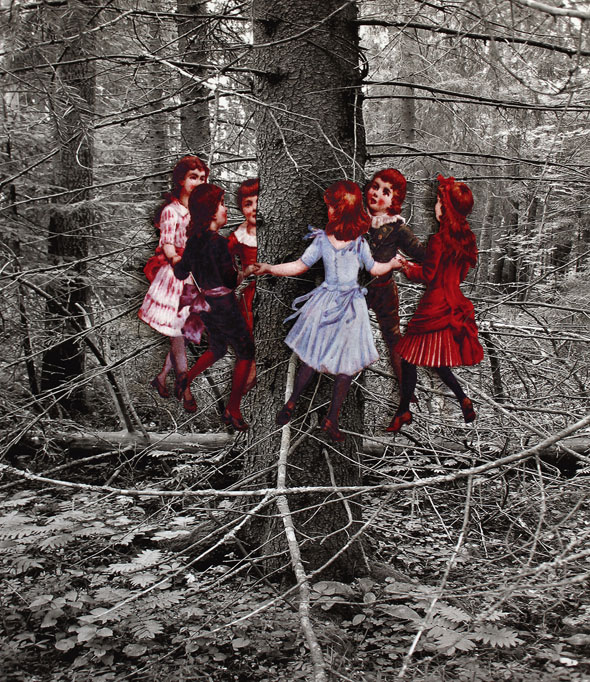
‘Ring dance’ by Ulla Jokisalo (pigment print and pins, 2009)
Finnish best-sellers in Estonia
8 February 2010 | In the news
In mid-January four books out of ten on the best-sellers’ list in Estonia were translations of Finnish books: a history of Estonia by Seppo Zetterberg (Viron historia, 2007, number 1), a book on 20th-century Estonian history edited by Sofi Oksanen and Imbi Paju (Kaiken takana oli pelko, ‘Fear behind it all’, 2009, number 6), the 2008 Finlandia Prize-winning novel, set in 20th-century Estonia, by Sofi Oksanen (Puhdistus, ‘Purge’, number 7) and a new translation of the classic 1940s novel Sinuhe, egyptiläinen (English translation, Sinuhe the Egyptian) by Mika Waltari (number 10).
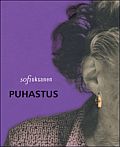 Oksanen’s novel was the second on the list of best-sellers in 2009. The list is run by Apollo bookstore chain; the largest in Estonia, it has ten shops in four cities and an internet shop. Apollo is owned by the Finnish Sanoma Trade, one of the five divisions of Sanoma Group, an European media corporation with activities in 20 countries and net sales of 3,030.1 million €.
Oksanen’s novel was the second on the list of best-sellers in 2009. The list is run by Apollo bookstore chain; the largest in Estonia, it has ten shops in four cities and an internet shop. Apollo is owned by the Finnish Sanoma Trade, one of the five divisions of Sanoma Group, an European media corporation with activities in 20 countries and net sales of 3,030.1 million €.
Yikes! How good are Finnish schools now?
28 November 2013 | This 'n' that
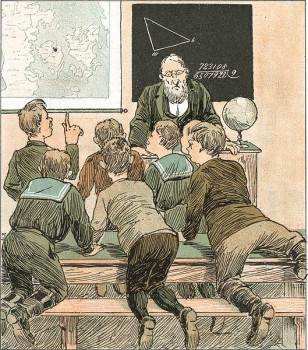
Questions and answers. Illustration, from a Danish magazine, 1890: Wikimedia
The new PISA results were published in December: these tests, conducted by the Organisation for Economic Co-operation and Development (OECD), measure the level of education of 15-year-old schoolchildren every three years.
Finland has done pretty well in recent years, so there has been interest in other countries in finding out what it is that makes Finnish schools better places for learning.
In 2000 Finnish pupils had been best at reading, and second at maths in 2003 – although competition has grown due to a larger number of countries, particularly in Asia – taking part in the study: for example, only 32 in 2000, but 65 in 2009 and in 2012.
In 2009 Finnish kids were third best in reading and sixth in maths. Now PISA 2012 results place Finnish kids in 12th place in maths, which created a stir in various educational circles. The best five were all Asian countries.
On the index list measuring skills at maths, science and literacy together, Shanghai leads, then come Singapore and Hong Kong. Finland is the best European country, number 7; Estonia is 8, Germany 16, Great Britain 21, the US 29, Sweden 38.
Non scholae, sed vitae discimus. Competition permeates everything now more than ever, but we do not learn for school but for life – not for PISA either. Still, teaching methods and students’ motivation are clearly worth improving.
The chances of learning on this globe are greater and more accessible than ever, but learning still takes brains, motivation and time. Yikes!
Comics turns
16 April 2010 | In the news
Comics make frequent appearances on the lists of best-selling Finnish books: on the ‘What Finland reads’ list in March, Pertti Jarla’s new comic strip book, Fingerpori 3, about the eponymous, weird city of Fingerpori (‘Fingerborg’), is number one. His two other Fingerpori books are number eight and ten on the list. The zany comedy in them is verbal, based on puns – and therefore not easily exportable.
The new and final volume of Hannu Väisänen’s autobiographical, fictional trilogy about the young wannabe artist Antero, Kuperat ja koverat (‘Convex and concave’) made its way into the top ten right away, making its appearance at number two.
The Finlandia Prize -winning novel, Gå inte ensam ut i natten (‘Don’t go out into the night alone’, translated into Finnish as Älä käy yöhön yksin) by Kjell Westö, is number three – the novel was published in September 2009, and this reappearance is partly explained by special campaigns in the bookstores, says Westö’s publisher, Otava.
Sofi Oksanen’s prize-winning novel Puhdistus (Purge, now published in English) from 2008, is back on the list again, now at number four. Kari Hotakainen’s latest novel, Ihmisen osa (‘Human lot’, 2009, to appear in English in 2012) is at number six.


